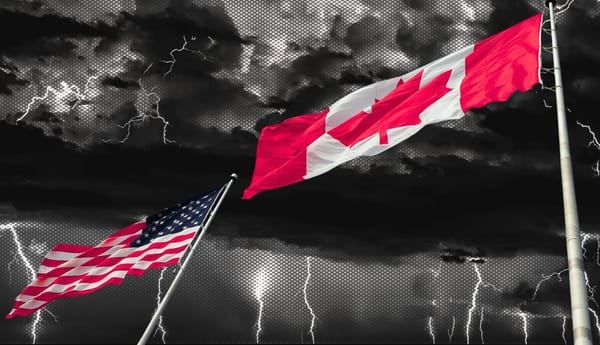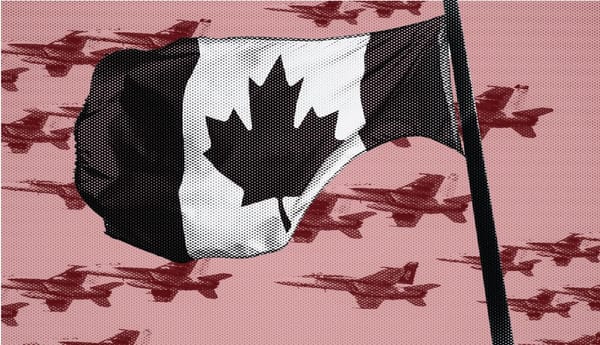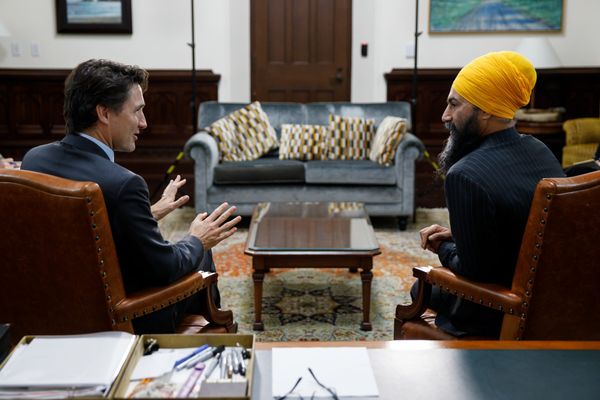Earlier this week, at the worst point of the pandemic in Canada thus far, the federal government dropped their annual budget, with more than $100 billion in new spending.
The feds are aiming to make childcare available to everyone for $10 per day within five years; companies making zero-emission technology are getting their corporate taxes cut; the federal minimum wage is increasing to $15.
It’s a pretty milquetoast list. There are some small, gradual changes that might make things a little better, one day, maybe. But there’s also a few glaring omissions, even by the Liberals’ standards.
National Pharmacare
In December, the government’s throne speech made healthcare a priority. They claimed they remain “committed to a national, universal pharmacare program and will accelerate steps to achieve this system.” None of those steps were included in the budget.
Literally four months ago, the government listed three fairly reasonable steps in making Pharmacare a reality. They promised: a strategy on rare diseases to help Canadians save money on life-saving, but often pricey, drugs; to establish a national index of medications to “keep drug prices low”; to work with provinces and territories to do these things “without delay.”
Not including Pharmacare provisions in the budget sure looks like a delay. Even CBC highlighted the absence.
Canada’s healthcare system is federally regulated and provincially operated. The federal government has the power to set rules. Budgeting money to subsidize the cost of drugs and make medicine affordable to everyone for a nominal prescription fee is feasible.
There’s a whole 2019 report (commissioned by this government, and promptly shelved never to be spoken of again) on how to fix the system, which estimates an annual cost of $3.5 billion in 2022, rising to $15.3 billion by 2027 as more medicines are covered. But that cost leads to huge savings for individuals, and helps ensure they receive needed medication.
That same report points out that Canada has been discussing Pharmacare for five decades. If the peak COVID-19 budget isn’t enough to make the Liberals finally commit to this plan, when will they?
Wealth Tax
Bad news if you were going to buy a yacht in 2022: there’s a new proposed tax on luxury cars and personal aircraft selling for more than $100,000, and personal boats retailing for more than $250,000. This is estimated to bring in about $604 million in tax revenue over five years, which, in a federal budget, is peanuts.
Let’s compare that to a basic implementation of a wealth tax. In July 2020, NDP MP Peter Julian suggested that Canadian resident families pay an annual 1 per cent tax rate on all wealth above $20 million. That’s roughly 13,800 families — admittedly, 13,800 of likely the most powerful families in Canada. The Parliamentary Budget Office estimated that marginal tax would generate $5.6 billion in just one year.
A 2020 poll from Abacus Data indicates 79 per cent of Canadians support the details of Julian’s proposed wealth tax, including nearly two-thirds of self-identified Conservative voters.
Affordable Housing
Speaking of tax, there’s a provision to introduce a 1 per cent tax on vacant or underused homes owned by non-Canadians, which will supposedly generate up to $175 million annually. (A similar tax in Vancouver charges a 1.25 per cent tax on all vacant homes within city limits, regardless of who owns them.)
The government is also promising to invest $2.5 billion in housing, and “reallocate” $1.3 billion “to speed up the construction, repair, or support of 35,000 affordable housing units.” That includes 13,700 units that need repairs and renovation.
Around $600 million over the course of seven years is going to the Affordable Housing Innovation Fund. This fund has previously built more than 17,600 units, including “more than 16,300 affordable housing units and units for persons with accessibility challenges,” meaning about 1,300 units that were neither affordable nor accessible. The “12,700 more units” promised through this program, which make up the bulk of new public housing stock in this budget, aren’t explicitly guaranteed to be affordable or accessible either.
There’s at least 4,500 Rapid Housing Initiative units being promised to help vulnerable Canadians, and 560 new shelter places for unhoused or homeless people, but the budget seemingly divorces broader housing affordability from the acute problem of homelessness. You can’t keep building shelter places for people who lose their homes because they can’t afford to pay rent.
Additionally, the budget notes that “$300 million in funding in 2021-22 and 2022-23” is going toward turning vacant commercial property into 800 units of housing built specifically for market-based rentals. It’s unclear how much of the rest of the housing stock will be rented or purchasable.
Let’s pretend for a minute we’re getting all of the housing both ways: it wouldn’t be enough to help everyone paying exorbitant rents or to sort out the out-of-control real estate-market. When there’s more than 1.6 million Canadians in “core housing need,” according to the budget, why is so little being done to help?
The housing measures in the budget are insufficient and flawed. Targeting foreign investors has nothing to do with the domestic demand that continues to drive up Canada’s soaring house prices. There aren’t nearly enough new homes being constructed, nothing to cool the red-hot real-estate market and little to limit the huge impact of for-profit housing.
Funding federal pharmacare, enacting a wealth tax and ensuring homes are more affordable were all easy measures the government could have taken to make good on their promises to improve Canadians’ lives.
The pandemic budget was a chance for real change. Instead we got moderate maybes.







